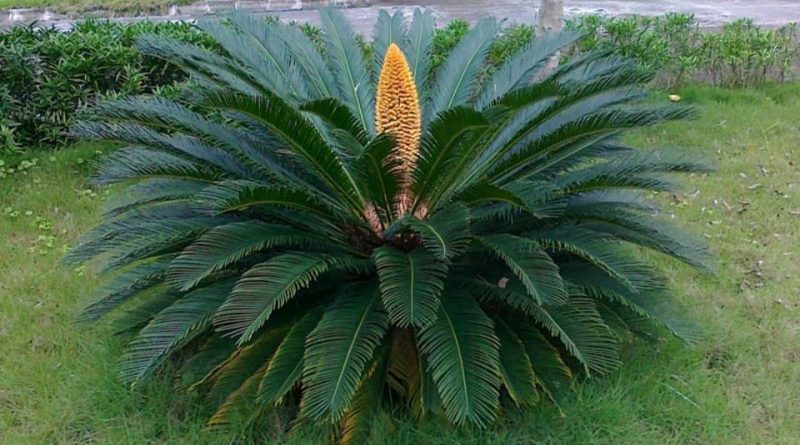Structural Features Of Cycas – Botany Notes – For W.B.C.S. Examination.
সাইকাসের স্ট্রাকচারাল বৈশিষ্ট্য – উদ্ভিদ নোট – WBCS পরীক্ষা।
Sixteen species of Cycas are found in the tropical and subtropical parts of the earth. The name Cycas has been derived from a Greek word Kykas = Cocopalm. It is an evergreen plant. In India Cycas is represented by six species— C. revoluta, C. pectinata, C. siamensis, C. beddomei, C. rumphiand C. circinalis.Continue Reading Structural Features Of Cycas – Botany Notes – For W.B.C.S. Examination.
Cycas revoluta is the most commonly cultivated species of Indian gardens. It also occurs in China, Africa, Nepal, Sri Lanka and Japan. Its natural habitat is in open, sunny, well-drained situations. It is a palm-like tree with size varies from 1-2 meters. As it yields ‘sago’, from the mucilage in its main trunk. It is popularly called ‘sago palm’. Leaflets are 6-8 mm broad with revolute margins.
Morphology:
Cycas sporophyte is an evergreen palm-like tree that attains a height of 0.4 to 2.0 mt. Sporophyte is dioecious i.e. male and female plants are separate. Both the plant body is differentiated into roots, stem and leaves.
(i) Roots:
Roots are of two types, i.e., normal tap root and coralloid root. Tap root is positively geotropism, non-green, without root hair. It helps in anchorage and absorbs water and minerals. Coralloid roots are lateral branches of tap root. It grows first horizontally (diageotropic) then, repeatedly divide dichotomously, come out of the soil surface (apogeotropic) in the form of coral like mass.
These are devoid of root hair and root cap. Its anatomy is similar to normal tap root, but its cortex is differentiated into three zones i.e., Upper cortex, Middle cortex and Lower cortex Middle cortex carries BGA (Anabena cycadcearum, Nostoc) symbiotically. Coralloid root helps in nitrogen fixation as well as respiration (due to lenticels).
(ii) Stem:
The stem is erect, columnar, woody and un-branched. It is covered with alternate whorls of leaf bases of foliage leaves and scale leaves. The stem apex bears a crown of leaves and sex organs at maturity.
(iii) Leaves:
Leaves are dimorphic i.e. 2 types, assimilatory or foliage leaves and scaly leaves or cataphylls. Both the leaf types are born at the stem apex in alternate spirals. Foliage leaves are large (1 -3 m), green, pinnately compound. Petiole has 2 rows of spines. Rachis bears 80-100 pairs of pinnae or leaflets.
Leaflets are sessile, elongated, tough, and lanceolate in shape with a spiny apex, revolute or smooth margins. Young leaves have circinate vernation like those of ferns and always covered with brown hairs called ramenta . Scale leaves are small, dry, brown, triangular leaves covered with ramenta. They are non- photosynthetic and protect the stem apex.
For Guidance of WBCS (Exe.) Etc. Preliminary , Main Exam and Interview, Study Mat, Mock Test, Guided by WBCS Gr A Officers , Online and Classroom, Call 9674493673, or mail us at – mailus@wbcsmadeeasy.in
Visit our you tube channel WBCSMadeEasy™ You tube Channel
Please subscribe here to get all future updates on this post/page/category/website



 Toll Free 1800 572 9282
Toll Free 1800 572 9282  mailus@wbcsmadeeasy.in
mailus@wbcsmadeeasy.in


















































































































